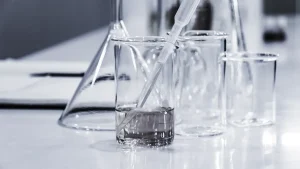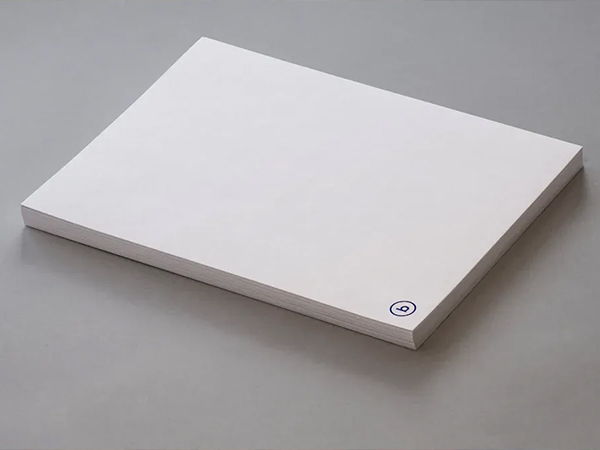
You encounter Alkyl Ketene Dimer Wax when you need paper that resists water and maintains print quality. This sizing agent plays a crucial role in neutral and alkaline papermaking. You benefit from its unique properties, which include:
- Optimal performance in neutral to slightly alkaline conditions, reducing machinery wear.
- Lower chemical consumption due to efficient sizing.
- Biodegradability, which lessens environmental impact.
- Support for recycled fibers, promoting sustainability.
These advantages make AKD Wax an effective and popular choice for modern paper production.
Key Takeaways
- Alkyl Ketene Dimer Wax (AKD) improves water resistance in paper, making it ideal for high-quality printing.
- Using AKD reduces the need for harsh chemicals, supporting eco-friendly and sustainable papermaking practices.
- AKD forms strong bonds with cellulose fibers, enhancing the durability and printability of paper products.
- Maintaining a neutral to slightly alkaline pH during the papermaking process maximizes AKD’s effectiveness.
- Choosing AKD over other sizing agents like rosin or ASA leads to better performance and less machinery corrosion.
Alkyl Ketene Dimer Wax Overview

Chemical Properties
You encounter Alkyl Ketene Dimer Wax as a unique compound with a structure that directly influences its performance in paper sizing. The molecule contains a β-lactone ring and long hydrophobic alkyl chains. This combination allows the wax to react with cellulose fibers, forming strong bonds that increase water resistance and prevent ink from spreading on the paper. The following table highlights how its chemical structure contributes to its sizing properties:
| Chemical Structure | Contribution to Sizing Properties |
|---|---|
| β-lactone ring and hydrophobic alkyl chains | Enhances water resistance and printability through esterification with cellulose fibers, increasing hydrophobicity and preventing ink feathering |
You benefit from its physical properties as well. Alkyl Ketene Dimer Wax melts at a relatively low temperature, typically between 47 and 51 °C. This feature makes it easy to handle during the papermaking process. You can dissolve it in organic solvents such as ethanol, benzene, and chloroform, which supports its application in various formulations.
- Melting point: 47 to 51 °C
- Soluble in organic solvents like ethanol, benzene, and chloroform
These characteristics ensure that you achieve consistent sizing results and maintain high-quality paper output.
How It’s Made
You rely on a carefully controlled synthesis process to produce Alkyl Ketene Dimer Wax for papermaking. The manufacturing steps focus on purity, efficiency, and yield. The process typically involves the following stages:
| Step | Description |
|---|---|
| 1 | Use long-chain carboxylic acid chlorides in inert solvents (such as diethyl ether or benzene) with triethylamine as a catalyst under anhydrous conditions. |
| 2 | Filter out insoluble triethylamine hydrochloride and evaporate the solvent. |
| 3 | Obtain long-chain alkyl chain dimers with yields over 90%. |
| 4 | For continuous processing, supply carboxylic acid chloride and tertiary amine separately to a reactor at temperatures between 90 and 110 °C. |
| 5 | Achieve lactone contents over 90% with short reaction times through phase separation or acidic extraction. |
Note: You benefit from recent technological advancements in AKD wax production. Manufacturers now use advanced catalysts and automated equipment to improve quality control and increase yields. These innovations also support eco-friendly chemistry, making the process more sustainable and cost-effective.
You see the impact of these improvements in the growing global market for Alkyl Ketene Dimer Wax. North America alone accounts for over 40% of the market share, and the demand continues to rise as manufacturers optimize production and focus on sustainability.
How It Works
Reaction with Cellulose
You play a key role in the papermaking process when you introduce Alkyl Ketene Dimer Wax to cellulose fibers. The unique chemistry behind this interaction sets the foundation for effective paper sizing. When you add the wax, it reacts with the hydroxyl groups present on the cellulose surface. This reaction forms a β-keto-ester bond, which creates a strong and stable connection between the wax and the fiber. Sometimes, the wax can also react with water, resulting in a β-keto-acid.
The process begins with the wetting of cellulose by the wax. You notice an initial rapid decrease in the contact angle, which means the wax spreads quickly over the fiber surface. Over time, this decrease slows down, influenced by interfacial and viscous forces. Hydrolysis of the wax vapor on the cellulose surface also plays a part in this phase. This two-step wetting behavior ensures that the wax covers the fibers thoroughly, preparing them for the next stage of sizing.
You can enhance this process further through vapor phase application. This method distributes the sizing agent more evenly across the fibers. The vapor condenses into the small pores on the fiber surfaces, increasing the hydrophobicity of the paper. As a result, you achieve better internal sizing, which reduces liquid penetration and improves the overall quality of the finished product.
Hydrophobic Layer Formation
After the initial reaction, you observe the formation of a hydrophobic layer on the paper fibers. This layer does not appear instantly. Instead, significant hydrophobicity develops two to three days after you treat the paper with the wax. The effect lasts for a long time. Even after 140 days, the treated surfaces remain sticky and hydrophobic, showing the durability of the treatment.
You see the wax migrate across the fiber surface, which reduces the size of the pores and enhances the water-repellent properties of the paper. Chemical analysis, such as FTIR, confirms that hydrogen bonding occurs between the wax and cellulose, strengthening the hydrophobic layer.
Tip: For best results, allow the paper to cure for several days after treatment. This waiting period maximizes the hydrophobic effect and ensures long-lasting performance.
You can compare the hydrophobic layer formed by Alkyl Ketene Dimer Wax with those created by other sizing agents. The following table highlights the differences:
| Feature | AKD Wax | Rosin Sizing |
|---|---|---|
| Bonding Mechanism | Covalent bonding with cellulose | Ionic bonding |
| Stability | More stable and long-lasting | Less stable |
| pH Conditions | Neutral to slightly alkaline | Acidic |
| Paper Degradation | Reduced degradation | Accelerates degradation |
| Machinery Corrosion | Less corrosion | Causes corrosion |
| Sizing Effect | Superior and durable | Effective but less durable |
| Dosage Efficiency | Lower dosage rates required | Higher dosage rates required |
You benefit from the superior and durable sizing effect of Alkyl Ketene Dimer Wax. The covalent bonds it forms with cellulose fibers provide stability and longevity, even in neutral or slightly alkaline conditions. This advantage reduces the risk of paper degradation and machinery corrosion, making your papermaking process more efficient and sustainable.
Benefits
Water Resistance
You gain a significant advantage in water resistance when you use Alkyl Ketene Dimer Wax for paper sizing. This wax forms a protective, water-repellent layer on each fiber. It bonds chemically with cellulose, which blocks water from penetrating the paper. The improvement is clear when you compare treated and untreated paper:
| Property | PVA/AKD Film | Untreated PVA Film | Improvement (%) |
|---|---|---|---|
| Water Absorption | Low | High | Significant |
| Water Vapor Transmission Rate | 58.1% | 100% | 41.9% |
You also see a dramatic reduction in water vapor transmission rates. For example, HD-AKD and SD-AKD waxes both reduce this rate by 91% compared to untreated paper. This means your paper stays dry and strong, even in humid conditions.
- AKD wax creates a protective, water-repellent layer on paper fibers.
- It chemically bonds with cellulose, preventing water penetration.
Printability and Durability
You notice better print quality and longer-lasting paper when you use this sizing agent. The wax reduces thickness swelling after water exposure. For example, after 2, 24, and 48 hours of immersion, thickness swelling drops by 90%, 62%, and 59% compared to untreated samples. Water uptake also falls sharply—by 91%, 75%, and 60% at the same time points. This means your paper resists warping and maintains its shape.
However, you should note that internal bond strength may decrease by about 53% after treatment. While this can affect adhesion, the overall durability and printability of the paper remain high. You get crisp, clear prints and paper that stands up to repeated handling.
Environmental Impact
You support sustainability when you choose this sizing agent. The wax works well in neutral and alkaline conditions, which reduces the need for harsh chemicals. You also benefit from its biodegradability, which means less environmental harm after disposal. The efficient sizing process lowers chemical consumption and supports the use of recycled fibers. By selecting this option, you help reduce waste and promote eco-friendly papermaking.
Tip: Choosing AKD-based sizing helps you meet environmental standards and customer expectations for green products.
AKD vs. Other Agents
Rosin and ASA Comparison
When you compare sizing agents, you see clear differences in how they perform and the environments they suit best. Rosin sizing works only in acidic conditions. This requirement can cause equipment corrosion and reduce the brightness of your paper. You may also face more frequent maintenance and shorter machine lifespans. Alkenyl Succinic Anhydride (ASA) operates in neutral to alkaline conditions, similar to AKD. However, ASA has lower stability, which can lead to inconsistent sizing results and more waste.
You benefit from using AKD in neutral or slightly alkaline environments. Modern paper machines often run under these conditions, making AKD a preferred choice. You also avoid the risk of corrosion and maintain higher paper brightness. Studies show that AKD offers better environmental performance, greater stability, and more reliable sizing than both rosin and ASA. This makes it a strong candidate for high-quality, sustainable paper production.
Customer demand for sustainable and high-performing paper continues to grow. You meet these expectations more easily with AKD than with traditional agents.
Unique Advantages
You gain several unique benefits when you choose Alkyl Ketene Dimer Wax over other sizing agents. The following table highlights key differences:
| Advantage | Alkyl Ketene Dimer (AKD) | Other Sizing Agents |
|---|---|---|
| Reaction Rate | Slower | Faster |
| Sizing Control | More controlled | Less controlled |
| Fiber Retention | Better | Varies |
| Compatibility with Alkaline Fillers | High | Varies |
| Risk of Hydrolysis | Reduced | Higher risk |
| Long-Term Stability | Excellent | Varies |
You experience more controlled sizing and better fiber retention with AKD. Its compatibility with alkaline fillers supports modern papermaking processes. You also see reduced risk of hydrolysis, which means your paper maintains its quality over time. While the application process for AKD can be complex and costs may vary, you often find that the long-term benefits outweigh the initial investment. Customers increasingly prefer AKD for its ability to improve strength, absorbency, and barrier properties, as well as its alignment with sustainability goals.
Application Factors

Concentration and pH
You must pay close attention to the concentration of Alkyl Ketene Dimer Wax when sizing different paper grades. The amount you use directly affects how well the wax bonds with cellulose fibers. During the drying stage, higher concentrations promote more esterification, which leads to a stronger hydrophobic barrier. This barrier improves water and ink resistance, making your paper more durable and high-quality.
You also need to monitor the pH of your papermaking process. The optimal pH range for effective sizing is between 7 and 9. This neutral to slightly alkaline environment matches the needs of modern paper machines. When you maintain this pH, you reduce equipment corrosion and allow better integration with alkaline fillers like calcium carbonate. As a result, you achieve consistent sizing and protect your machinery.
Additives and Efficiency
You can further enhance sizing efficiency by selecting the right additives. These substances help distribute the wax evenly and improve the uniformity of the hydrophobic layer. Additives also influence how the wax migrates and orients itself on the fiber surface during curing.
The hydrophobicity of the film and concentration of the alkyl chains at the surface of the films were increased with heating times. The hydrophobicity of the films was closely related to the chemical states of sizing agents at the surface. Increase in concentration of alkyl chains seems to be caused by the migration of sizing agent to film surface and its molecular orientation at the blend film surface.
The mechanism that dominates the redistribution of AKD during curing is not fully understood… The redistribution of AKD in the curing process of papermaking is complicated and may involve the spreading of AKD melt, which is driven by the surface tension and/or the capillary forces, and the evaporation/re-deposition of AKD vapour.
You may face challenges such as changes in paper demand, environmental concerns, and limited technological advancements. However, by carefully adjusting concentration, pH, and additives, you can maximize the efficiency and quality of your paper sizing process.
You rely on Alkyl Ketene Dimer Wax to boost paper quality, improve water resistance, and support sustainable production. When selecting this sizing agent, consider factors like pH levels, emulsion stability, curing process, and retention aids:
| Key Factor | Description |
|---|---|
| pH Levels | AKD performs best in a neutral to slightly alkaline environment (pH 7-9). |
| Emulsion Stability | Stability and particle size of the AKD emulsion are critical for consistent sizing performance. |
| Curing Process | The drying section of the paper machine is crucial for the esterification reaction with cellulose. |
| Retention Aids | Used to ensure effective fixation of AKD particles onto cellulose fibers, preventing loss. |
Looking ahead, you will see trends such as bio-based AKD, advanced emulsions, nano-sizing, and zero-formaldehyde formulations. These innovations will help you meet growing demands for efficiency and environmental responsibility.
FAQ
What is the main purpose of Alkyl Ketene Dimer Wax in papermaking?
You use Alkyl Ketene Dimer Wax to increase water resistance in paper. This sizing agent reacts with cellulose fibers, forming a hydrophobic layer. You achieve improved printability and durability for various paper products.
Can you apply AKD Wax to recycled paper?
Yes, you can apply AKD Wax to recycled fibers. The wax supports sustainable production and maintains sizing efficiency. You help reduce waste and promote eco-friendly practices in your papermaking process.
How does AKD Wax compare to rosin sizing in terms of environmental impact?
AKD Wax offers lower environmental impact than rosin sizing. You avoid acidic conditions, reduce chemical consumption, and support biodegradability. This choice helps you meet green standards and customer expectations for sustainable paper.
What factors affect the efficiency of AKD sizing?
| Factor | Impact on Sizing Efficiency |
|---|---|
| Concentration | Higher levels improve hydrophobicity |
| pH | Neutral to alkaline pH works best |
| Additives | Enhance distribution and retention |
You optimize these factors to achieve consistent and high-quality results.






